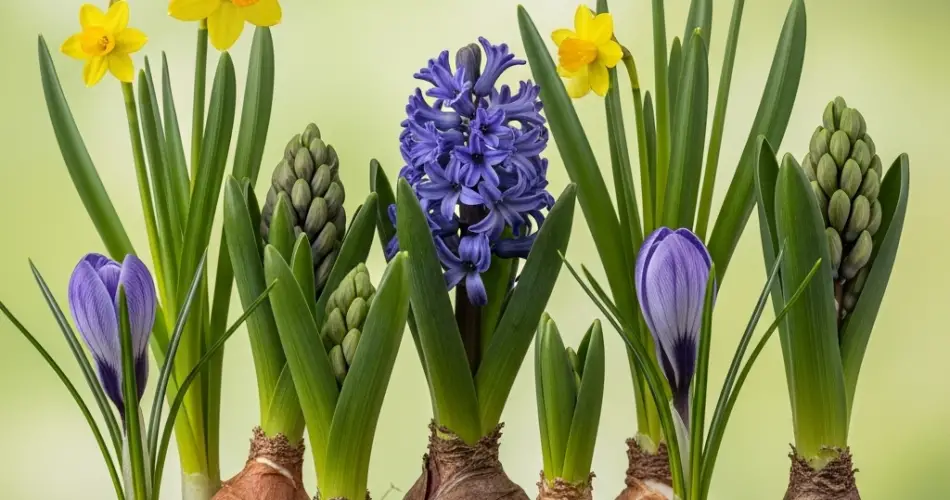Bulbs are among the most rewarding plants to grow in your garden. They offer vibrant blooms and beautiful foliage that can brighten any space, from flower beds to containers. Whether you are planting tulips, daffodils, lilies, or crocuses, understanding the right time to plant and how to care for bulbs is essential to ensure healthy growth and spectacular flowering.
This guide will cover everything you need to know about planting bulbs, the best planting seasons, and how to take care of them for a thriving garden year after year.
What Are Bulbs?
Bulbs are underground storage organs that house the plant’s nutrients during dormant periods. They consist of layers of fleshy scales (like an onion) that store energy to help the plant sprout flowers and leaves when the growing season begins. Bulbs come in many varieties and sizes, and can be broadly categorized into:
-
Tunicate bulbs: These have a papery outer covering (e.g., tulips, daffodils).
-
Scaly bulbs: These lack a protective covering and have overlapping scales (e.g., lilies, fritillaries).
Knowing the type of bulb you are planting can help determine specific care needs.
Best Time to Plant Bulbs
The planting time for bulbs depends largely on the type of bulb and your climate zone. Most garden bulbs fall into two groups based on their bloom season:
-
Spring-flowering bulbs: These are typically planted in the fall before the ground freezes. The cold period is essential for breaking dormancy and promoting root development.
-
Summer-flowering bulbs: These are usually planted in the spring after the danger of frost has passed.
Fall Planting for Spring-Flowering Bulbs
For bulbs like tulips, daffodils, crocuses, hyacinths, and snowdrops, fall is the ideal planting season. Follow these tips:
-
Timing: Plant bulbs 6 to 8 weeks before the first expected frost. This allows the bulbs enough time to develop roots.
-
Location: Choose a spot with well-draining soil and full to partial sunlight.
-
Depth: As a general rule, plant bulbs at a depth about two to three times their height. For example, a 2-inch tall bulb should be planted 4 to 6 inches deep.
-
Spacing: Space bulbs according to their size, usually 3 to 6 inches apart.
-
Soil Preparation: Loosen the soil and mix in compost or organic matter to improve drainage and fertility.
Spring Planting for Summer-Flowering Bulbs
Bulbs such as lilies, gladiolus, dahlias, and some varieties of allium bloom in summer and should be planted after the last frost in spring.
-
Timing: Plant once the soil has warmed to around 60°F (15°C).
-
Location: Most summer bulbs prefer full sun and fertile, well-draining soil.
-
Depth and Spacing: Follow the specific planting depth for each bulb type, usually deeper for larger bulbs.
-
Watering: Water well after planting to help the bulbs establish roots.
General Tips for Planting Bulbs
-
Healthy Bulbs: Select firm, plump bulbs free from mold, soft spots, or damage.
-
Orientation: Plant bulbs with the pointed end facing upwards; this is where the shoots will emerge.
-
Watering: After planting, water bulbs thoroughly to settle the soil around them.
-
Mulching: Apply a 2-3 inch layer of mulch to regulate soil temperature, retain moisture, and protect bulbs from extreme weather.
Bulb Care After Planting
Once bulbs are in the ground, ongoing care ensures healthy growth and flowering:
-
Watering: Keep the soil moist but not waterlogged, especially during the growing season.
-
Fertilizing: Apply a balanced fertilizer or bulb-specific fertilizer at planting time and again as growth begins in spring.
-
Deadheading: Remove spent flowers promptly to prevent the plant from putting energy into seed production.
-
Allow Foliage to Die Back: After blooming, leave the leaves intact to allow the bulbs to photosynthesize and store energy for the next season. Only trim the foliage once it turns yellow and withers.
-
Protection from Pests: Bulbs can be vulnerable to rodents like squirrels and voles. Use protective mesh or deterrents if necessary.
Storing Bulbs
If you live in a region with harsh winters or want to delay planting, many bulbs can be stored for a few months:
-
Remove soil gently and store bulbs in a cool, dry, well-ventilated area.
-
Keep bulbs away from direct sunlight and moisture to prevent rot.
-
Label bulbs clearly for easy identification when planting season arrives.
Common Challenges and Solutions
-
Rotting Bulbs: Usually caused by poor drainage. Improve soil drainage or grow bulbs in raised beds or containers.
-
Weak or No Blooms: May result from planting bulbs too shallow, over-fertilizing with nitrogen, or not allowing foliage to die back fully.
-
Pests: Use natural repellents or barriers to protect bulbs from animals.
Conclusion
Planting and caring for bulbs is a straightforward yet highly rewarding gardening activity. By understanding the right planting times, preparing your soil properly, and maintaining consistent care, you can enjoy a stunning display of flowers year after year.
Whether you’re starting with tulips in the fall or lilies in the spring, bulbs bring beauty and color to your garden that can transform any outdoor or indoor space.
Start planning your bulb garden today and experience the joy of watching these amazing plants bloom season after season.



